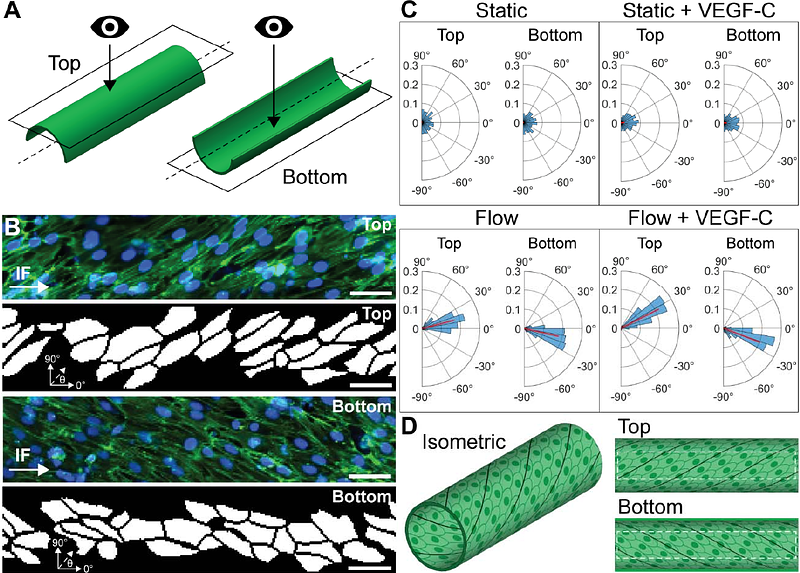Fluid forces control structural remodeling of blind-ended lymphatic microvessels

Fluid forces control structural remodeling of blind-ended lymphatic microvessels
Holter, J. C.; Agarwal, S. S.; Tinapple, J. W.; Barlage, J. M.; Jones, T. H.; Song, J. W.
AbstractThe transport function of lymphatic vessels is altered during tissue injury, inflammation, and cancer. Defects in lymphatic function are associated with changes to the biophysical microenvironment, including pressure and flow. However, the ability of fluid forces to orchestrate the remodeling of blind-ended lymphatic vessels and lymphangiogenesis is not well understood. Here, we developed a novel microphysiological system (MPS) that recapitulates the blind-ended microanatomy and fluid absorption properties of capillary lymphatics. Our MPS implements a continuum of pressure-driven interstitial, transmural, and luminal flow to mimic fluid forces naturally present within the lymphatic microenvironment. We found that interstitial flow (IF) and VEGF-C cooperate during lymphangiogenesis. Notably, we observed that sprouting was most prominent at the blind-ended region of lymphatic vessels where transmural flow was highest in our MPS. Moreover, IF guided invading sprouts into the surrounding ECM antiparallel to streamlines within a non-uniform 3-D flow field. Strikingly, flow-induced elongation and axial alignment of intraluminal cells propagated to vessel-level phenotypic differences, such as vasoconstriction and helical patterning. The structural remodeling of these lymphatic vessels was concurrent with lymphangiogenesis. Thus, our results reveal how extravascular and intraluminal endothelial cells integrate signals from native fluid forces to coordinate the expansion and remodeling of capillary lymphatics.